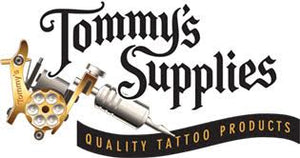Tattoo Needles 101: How to Choose the Right Needle for Every Design

TL;DR: Tattoo needles come in various types and groupings like round liners, shaders, and magnums, each serving a specific purpose. Understanding diameters, tapers, and configurations helps artists choose the best needle for fine lines, shading, coloring, or packing. Matching the right needle to the style ensures smoother application, better healing, and superior artwork.
Whether you’re a budding tattoo artist or expanding your technical skills, learning about tattoo needles is foundational. The wrong needle can sabotage your work, while the right one elevates every stroke. This guide will demystify the different types of needles, their configurations, and what to use for each tattoo style.
1. Tattoo Needle Groupings: The Core Categories
Round Liners (RL)
Round liners group several needle points in a tight circular formation. They’re used for precise linework and outlining.
- 3RL: Delicate lines
- 5RL: Medium outlines
- 9RL and up: Bold, thick outlines
Round Shaders (RS)
These needles are arranged similarly to liners but spaced slightly apart to allow shading and softer fills.
- Ideal for coloring small areas or creating smooth transitions
Magnum Shaders (M1, M2)
Magnums are flat arrays of needles used for large-scale shading and color packing.
- Standard Mags (M1): Straight rows for solid fills
- Curved Mags (CM or Soft Edge Mags): Arched formation for softer gradients
Flat Needles (F)
Needles lined up in a single row, great for geometric work or color blending.
- Rarely used by beginners but useful in traditional and bold color styles
2. Needle Count and Diameter: Precision Matters
Needle Count
The number before the configuration (e.g., 7RL) indicates how many needle tips are in the group. More needles = thicker lines or wider shading.
Needle Diameter
Standard diameters include:
- #12 (0.35 mm): Standard, common in most work
- #10 (0.30 mm): Medium-fine, good for smooth lines
- #8 (0.25 mm): Ultra-fine, for details or micro work
Smaller diameters are gentler on the skin and better for detail, while thicker needles deliver more pigment quickly.
3. Needle Taper: Length Impacts Ink Flow
Taper refers to how long the needle’s tip is ground. Common tapers:
- Short Taper (1.5-2 mm): Releases ink faster, more trauma
- Long Taper (4-7 mm): Less trauma, smoother transitions
- Extra Long Taper: Used for ultra-fine details and realism
4. Choosing by Tattoo Style
Fine Line & Minimalist
- 1RL, 3RL with extra long taper
- Use thinner diameters (#8 or #10)
Traditional Line Work
- 7RL or 9RL, standard taper, #12 diameter
Black & Grey Shading
- CM (Curved Magnums), #10 diameter, long taper
- Pair with grey wash ink for smooth gradients
Color Packing
- M1 or M2 Magnums, medium taper, #12 diameter
- Larger counts like 15M work well for broad fills
Geometric/Blackwork
- Flat needles (7F, 9F) for clean angles
- Round liners for crisp outlines
5. Needles vs. Cartridges
Traditional Needles require soldering to a bar and pairing with tube grips. Cartridge Needles are modular, plug-and-play options for rotary pens and newer setups.
- Cartridges are ideal for beginners and artists switching designs often
- Look for brands with membrane systems for better hygiene
6. Safety & Hygiene
- Always use pre-sterilized, disposable needles
- Check packaging for lot numbers and expiration dates
- Never reuse needles
7. Brands to Trust
For consistent quality and hygiene, some reliable brands include:
- Kwadron
- Cheyenne
- TATSoul Envy
- EZ Revolution
- Big Wasp (budget but solid for practice)
FAQ
Q1: Can I use the same needle for lining and shading?
A: Technically yes, but results will be inconsistent. Use liners for outlines and magnums or shaders for fills.
Q2: What’s the difference between M1 and M2 magnums?
A: M1 = single stacked; M2 = double stacked for denser color packing.
Q3: How do I dispose of used tattoo needles?
A: Use a sharps container and follow local biohazard regulations.
Q4: Do I need a different machine for magnums vs liners?
A: Some machines handle both; others are tuned specifically. Adjustable stroke machines are best for versatility.
Q5: What’s the best needle for beginners?
A: Start with 3RL for line practice and 7M1 for shading practice on synthetic skin.
Choosing the right tattoo needle can feel like a science—but once you understand groupings, diameters, and configurations, it becomes second nature. Experiment, practice on fake skin, and don’t be afraid to switch things up as your style evolves.










